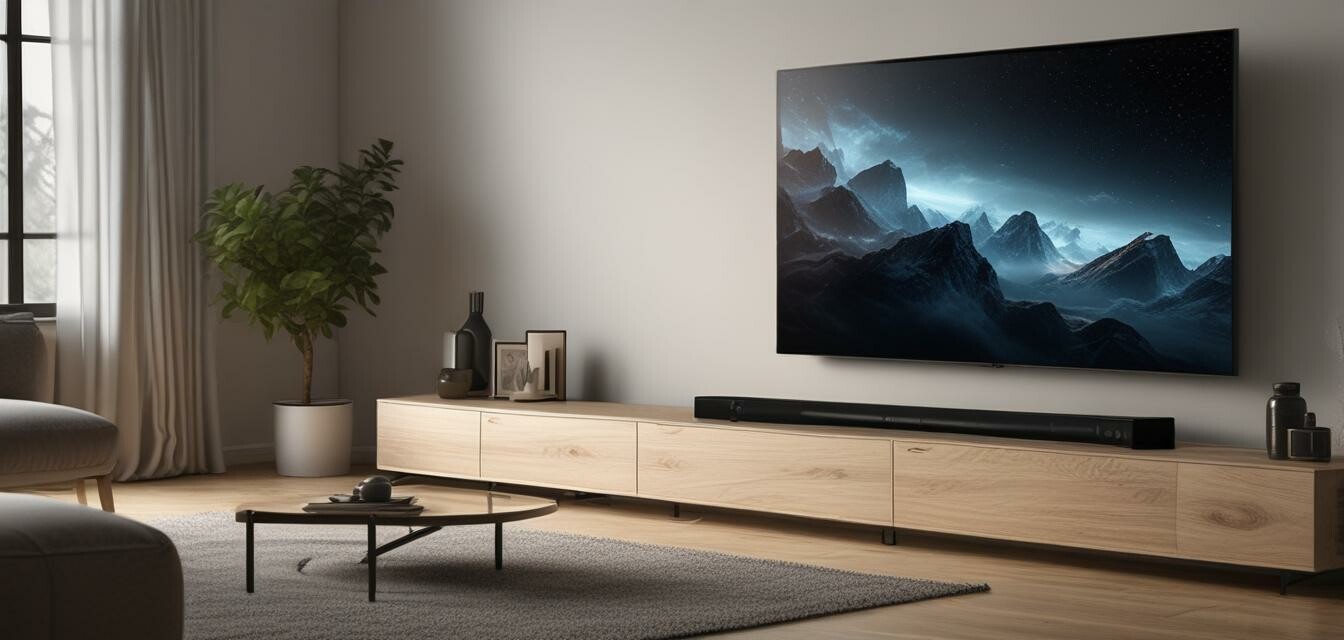
How to Sync Your Soundbar with Your TV
Key Takeaways
- Understanding your TV's audio output options is crucial for proper setup.
- HDMI ARC is the preferred method for syncing soundbars with modern TVs.
- Learning how to adjust your soundbar settings can enhance audio quality.
- Wireless soundbars offer convenient connectivity without additional cables.
- Always refer to your soundbar and TV manuals for specific instructions.
If you want to elevate your home entertainment experience, syncing your soundbar with your TV is a vital step. This guide provides step-by-step instructions on how to do this seamlessly, ensuring that you get the best audio experience possible.
Understanding the requirements
Before diving into the sync process, it’s important to understand your equipment. Verify the following:
- Both your soundbar and TV are powered on.
- You have the necessary cables, such as HDMI, optical, or RCA.
- Your TV supports the audio output method you intend to use.
Steps to Sync Your Soundbar with Your TV
1. Use an HDMI cable (preferred method)
For most modern soundbars and TVs, using an HDMI ARC (Audio Return Channel) connection is the best choice. Here’s how:
- Locate the HDMI ARC port on your TV. This is often marked as 'ARC' in the HDMI section.
- Plug one end of the HDMI cable into the HDMI ARC port on your TV.
- Connect the other end of the HDMI cable to the HDMI OUT (ARC) port on your soundbar.
- Turn on your TV and soundbar, and set your soundbar to the HDMI input.
- Go to your TV settings and select the sound settings. Choose ‘External speakers’ or ‘Soundbar’ as your output device.
2. Using an optical cable
If your TV does not support HDMI ARC, an optical cable is a good alternative:
- Connect one end of the optical cable to your TV’s optical audio output.
- Plug the other end into your soundbar’s optical input.
- Select the optical input on your soundbar.
- Adjust your TV’s sound settings to output audio through the optical connection. This might include changing to an external audio system in the sound settings.
3. Connecting via Bluetooth
For a wireless connection, follow these steps:
- Ensure Bluetooth is enabled on your TV.
- Put your soundbar in pairing mode. This usually involves holding down a button on the remote or soundbar.
- On your TV, go to the Bluetooth settings and search for devices.
- Select your soundbar from the list of available devices.
- Confirm the pairing, and adjust the TV sound settings if necessary.
Troubleshooting common issues
If you experience issues while trying to sync your soundbar, consider the following:
- Check all connections to ensure they are secure.
- Verify that your TV’s output settings are correctly set to the soundbar.
- For Bluetooth connections, ensure the devices are within range and try unpairing and re-pairing.
- Refer to your specific soundbar and TV manuals for detailed troubleshooting steps.
Optimizing your sound quality
Once your soundbar is synced, take a moment to optimize the settings:
- Explore the sound modes available on your soundbar (e.g., music, movies, news).
- Adjust the bass and treble settings to your liking.
- Check if your soundbar has any room correction features to adapt the audio to your space.
Further reading
To get the most out of your soundbar, consider checking out some additional resources:
- Visit our Buying Guides for detailed soundbar selection criteria.
- Explore wireless soundbars for flexibility in your audio setup.
- Browse more How-To Guides for optimizing your sound experience.
Pros
- Wireless options remove the clutter of cables.
- HDMI ARC provides the best audio quality.
- Easy setup with clear instructions.
Cons
- Older TVs may lack HDMI ARC or optical outputs.
- Bluetooth can cause audio delays in some cases.
- Wiring can be complex for multiple devices.
Conclusion
Syncing your soundbar with your TV doesn't have to be complicated. By following these straightforward steps, you can enjoy enhanced audio for your entertainment. If you encounter any issues, refer back to this guide or consult your product manuals. For more help, explore our How-To Guides for additional tips and tricks for your soundbar.